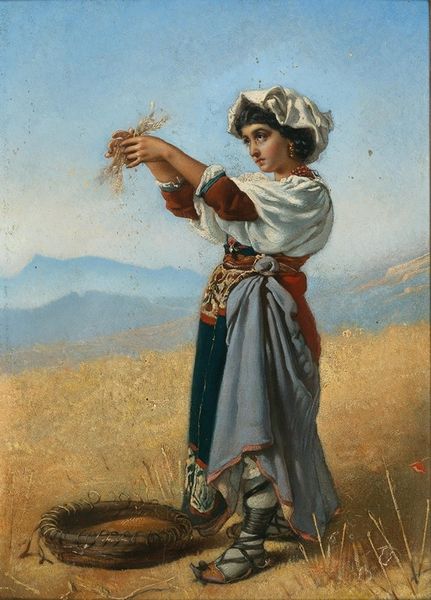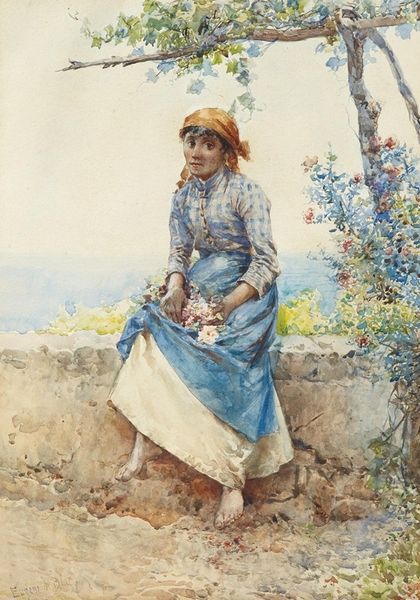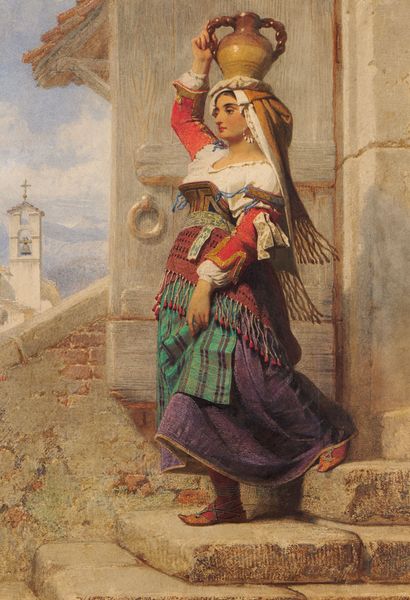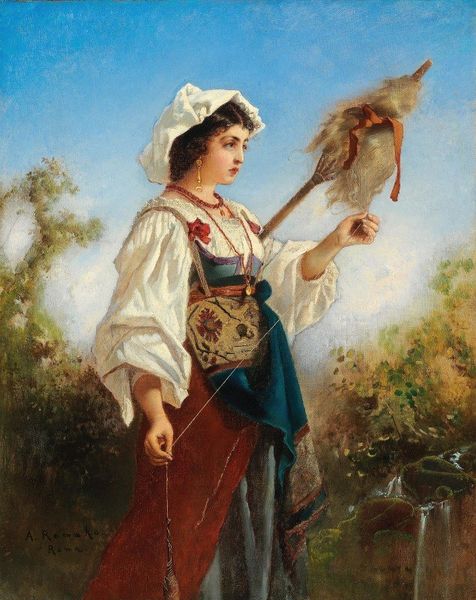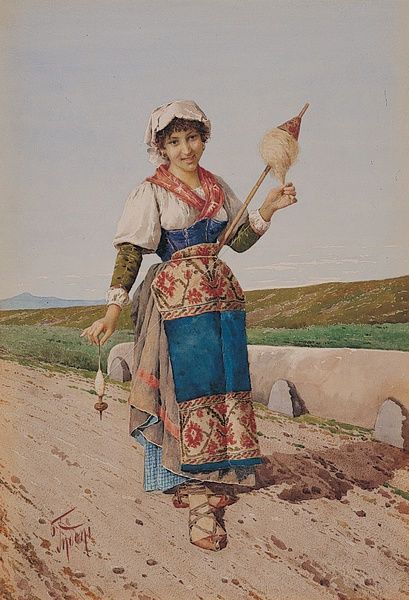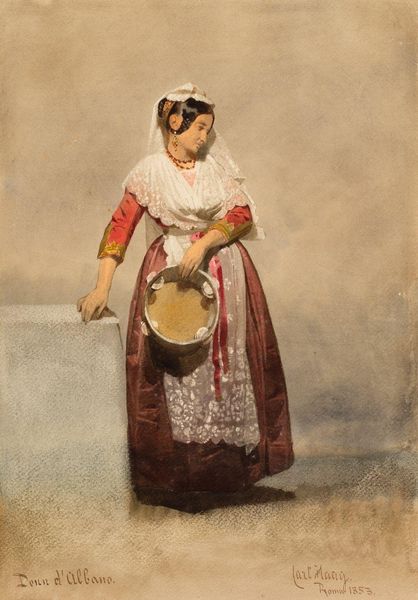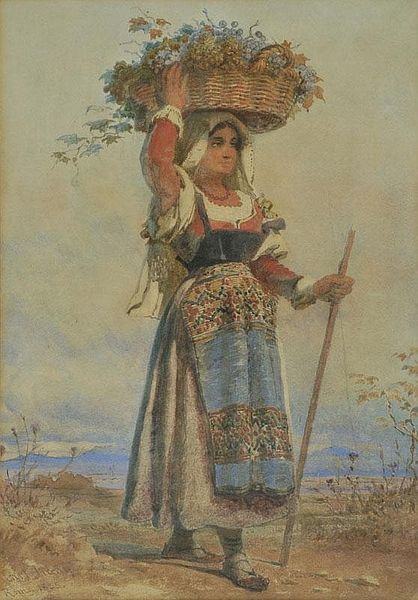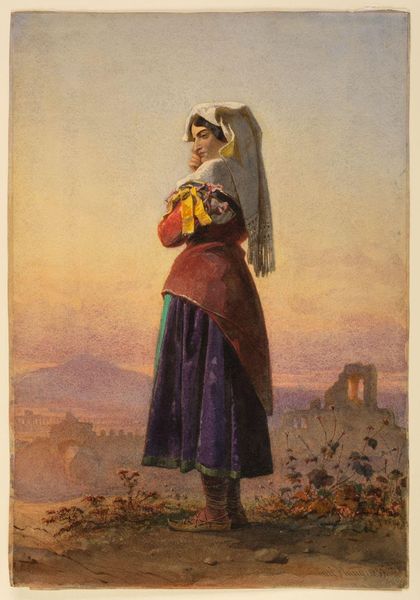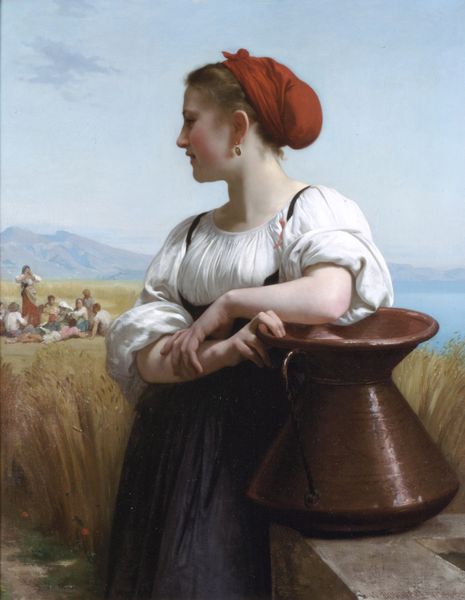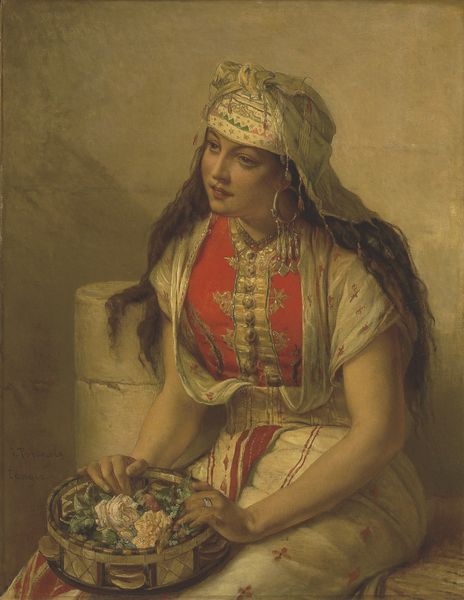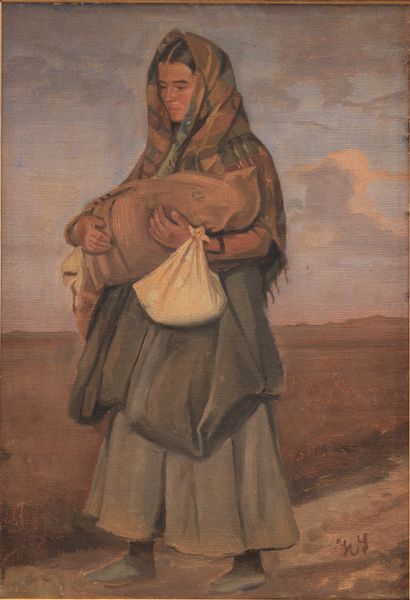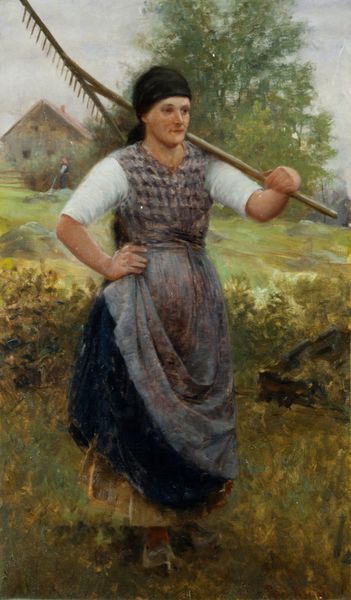
Dimensions: 34.3 x 24.2 cm
Copyright: Public domain
Curator: Carl Haag’s "An Italian Woman Holding a Tambourine," painted in 1857, offers us a window into the artist’s portrayal of Italian genre. It’s currently held in a private collection. Editor: The first thing that strikes me is the texture; it appears almost photographic in its realism, especially within the woman’s costume and the landscape setting. You can see the rough canvas in contrast with her delicately painted features. Curator: Exactly, and the social context of genre painting is key here. Haag, a German artist, tapped into a market fascinated by romanticized depictions of foreign cultures, particularly the Italian peasantry. What narratives do we find woven into her dress and the tool of the tambourine itself? Editor: Well, let’s think about materiality first. The clothing is so carefully illustrated. And the tambourine suggests labor—a musician, yes, but also someone using their skill as work, perhaps even on the edges of performance and subsistence. There’s a class component in these romanticised paintings. Curator: That's insightful. We need to acknowledge how the woman’s perceived ethnicity impacts that lens. Italian women in the 19th century were frequently subjected to gendered expectations rooted in beauty, tradition, and subservience, which directly impacts their participation in public space. The image isn’t just picturesque; it reproduces stereotypes and power dynamics, however subtly. Editor: Right. Look closer at the landscape too. Notice how little detail it contains relative to her garments. It’s like a backdrop that gives context to *her,* almost like saying her value stems primarily from how pretty she looks in traditional garments as an Italian subject. Curator: And how the tambourine almost obscures the narrative, lending an aura of entertainment rather than delving into any deeper reality of labor, and of ethnic belonging. It becomes a consumable artifact in the eyes of Haag’s audience. Editor: What’s left is something ambiguous about its celebration. Curator: Ambiguity, I believe, is key, particularly as we reconsider works that perpetuated orientalist visions. Haag's illustration offers a valuable snapshot not of authenticity but of colonial projection. Editor: It is an interesting case study to examine how we portray labor with considerations to performance, gender, class, and overall access. Curator: Indeed. Examining artworks such as this from various critical vantage points can give them space for much broader analysis.
Comments
No comments
Be the first to comment and join the conversation on the ultimate creative platform.
